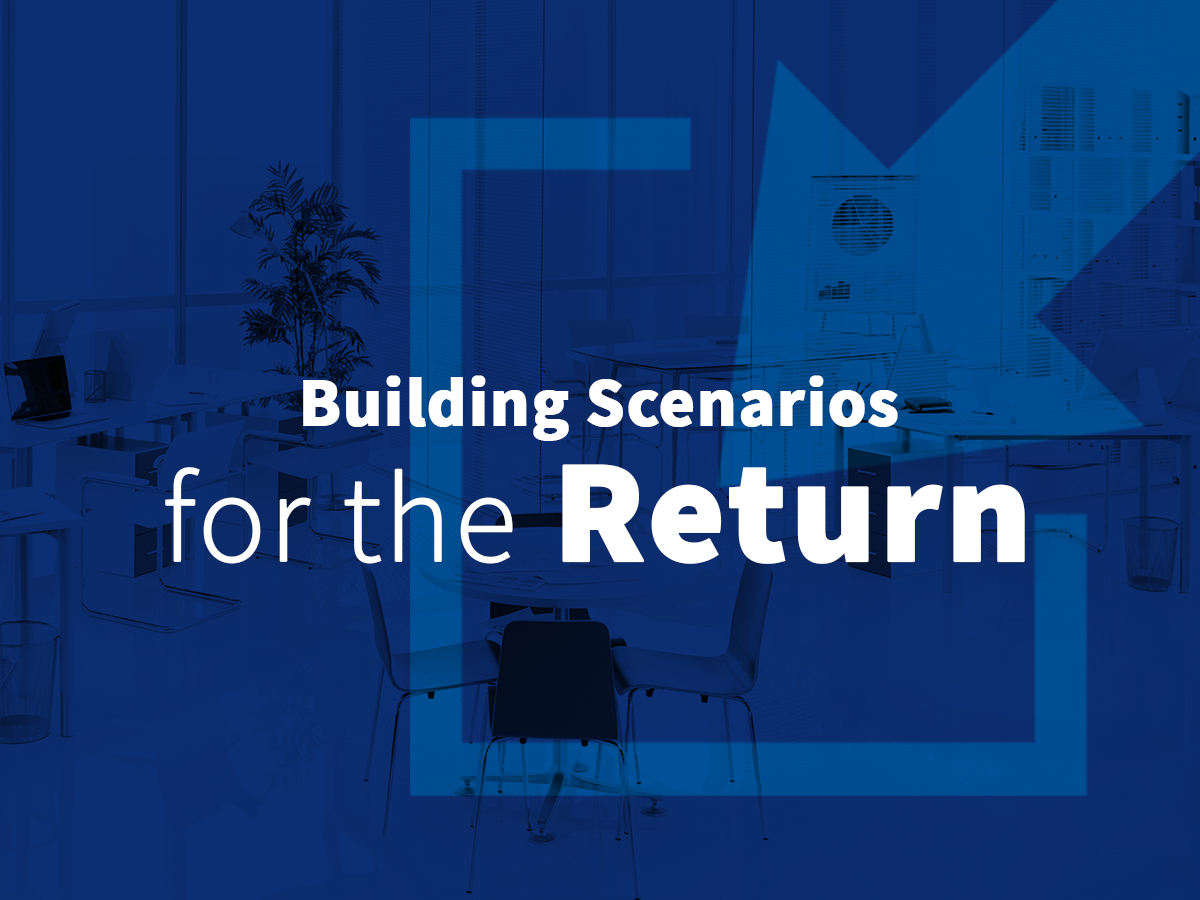Whether returning to the office is a good thing or a bad thing depends largely on whom you ask. I know plenty of people who are quite comfortable and efficient in a work-from-home environment. I know others who struggle with maintaining the necessary self-discipline. There are also people from both camps who, whether or not they can function in an independent environment, are simply too social-minded to be physically away from their colleagues and customers for the length of time required by the pandemic – regardless of how many video calls and meetings they might be able to attend. In any case, the larger issue is safety from disease. I’m not the guy to weigh-in on that aspect. I have no medical background, and only know what I see in the media – just like many of you who are reading this blog.
But I do believe the time has come to at least start building scenarios. Notice I didn’t say “plans.” Certainly, there are plenty of people out there building plans, and even acting on those plans. Part of this is because many businesses and roles do not exactly lend themselves to the work-from-home environment. Others, I assume, have their own reasons for not wanting to continue to participate in the lockdown.
Wherever you might stand on this often acrimonious issue, it’s arguably time to start looking at what a return to the office would look like – regardless of when you may determine it’s time to actually move forward with such an initiative.
Social distancing is likely to remain a recommendation for the foreseeable future. Thus, an office that fit your company “just right” six months ago may not be big enough to accommodate your entire team for now. Thus, many executives are pondering the idea of moving back to the office on an incremental basis once CDC guidelines for cleanliness have been met. This addresses the need for additional space while at the same time providing some flexibility for employees who might not yet be comfortable with an imminent return. In some cases, that concern can have more to do with the commute than the office, itself. People who ride commuter trains or other forms of public transportation may find it difficult to social distance when the doors open at the end of the line and potentially hundreds of people file onto the platform.
One solid strategy appears to be gathering feedback from a wide variety of people at different levels and in different roles within your organization. Are your people ready? Are they feeling safe? What are the real costs of continuing the work-from-home environment? What are the risks of coming back? What are the risks of bringing them back to the office right now, and what metrics will you use to monitor your success? In many cases, this type of dialogue may be a fundamental factor in determining your readiness.
Also, many companies adjusted their technological environments to accommodate a work-from-home environment. While I don’t believe that too many of those adjustments would preclude an easy return to the office, I do believe that this is something that each company needs to evaluate for itself, typically with the help of a Trusted Advisor.
Develop multiple scenarios from which you can choose once your company decides it’s time to move forward. Combining the opinions and expertise of your team, along with the opinions and expertise and opinions of your Trusted Advisor will go a long way towards protecting your business, protecting your people, and furthering the success of both.
